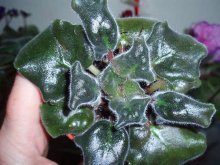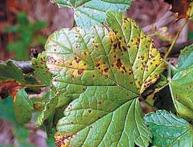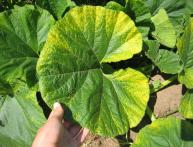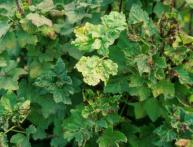Why violet leaves curl and how to fix it
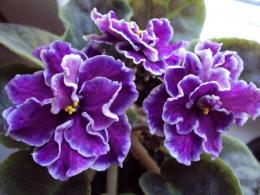
Violet is a fairly common houseplant. It can decorate rooms for almost any purpose. Violet is not too demanding on living conditions, but still, for successful development and flowering, it will need to create certain growing conditions. One of the signs diseases violets is the curling of the leaves.
Content:
- The main causes of leaf curling
- The influence of excess fertilizer and improper replanting
- Corrective Action
The main causes of leaf curling
So, why do violet leaves curl? The most likely causes of this phenomenon are listed below:
- Bay
- Pests
- Lighting violation
- Incorrect transplant
- Excess fertilizer
The most common reason. Beginning flower growers often mistake flooding for a lack of watering. Their symptoms are very similar: wilting and curling of leaf edges, loss of turgor. If these symptoms are not responded to properly, the plant will soon die.
The cause of curling of violet leaves can be pests, most often this is a cyclamen mite. Signs of tick infestation are as follows:
- Curled edges of sheets
- Twisted stems
- Excessive pubescence of leaves and petioles. From a distance you might even think that the plant is covered with a thick layer of dust
- Withering and falling of flower stalks
- Deformed growth point
- Developmental delay
Cyclamen mite colonies usually settle on the lower part of leaf blades.There they feed on the sap of the plant and reproduce. Due to its very small size, it is very difficult to see the pest, which significantly complicates the fight against it in the early stages.
Errors in lighting mode
Insufficient or excessive lighting can also cause this physiological disorder. This happens especially often when keeping violets under the lamps. In this case, the daylight hours are too long for them, and the light intensity is too high.
The cause of deformation of sheet plates can also be too high an ambient temperature. In this case, the violet tries to reduce moisture consumption and curls the leaves.
The influence of excess fertilizer and improper replanting
A violet can also react to too much of one or another nutrient by curling its leaves. This happens especially often when there is an excess of nitrogen, which occurs when the application regime or application rates are not followed.
An excess of nitrogen can also occur when a plant is transplanted into unsuitable soil. In addition to deformation of the leaves, too many stepsons may also appear.
Incorrect transplant
Improper replanting of the plant can also cause the leaves to curl. If within a few days after transplants the violet lifted or curled its leaves, which means everything didn’t go so well.
It may be that during replanting work the root system was severely damaged or the wrong soil was chosen. In general, violets do not tolerate any manipulations with their root system quite well, so you should not disturb them unless absolutely necessary.
Corrective Action

Now we have figured out the main reasons for leaf curling, now we just need to learn how to eliminate them.
Eliminating the consequences of the flood
The first thing to do when a flood occurs is to carefully transfer the violet to another pot with drier soil. In this case, it is necessary to cut out all rotten places on the root system. If the symptoms of flooding have just begun to develop, you can get by by drying the earthen clod and loosening it.
You should also check for drainage holes. To prevent flooding in the future, you need to follow these simple rules:
- Water only after the top layer has dried. soil
- Watering is best done from a tray
- After watering, be sure to drain excess water from the tray.
Fighting ticks
The cyclamen mite is a rather dangerous and difficult to remove pest. Its destruction must be approached comprehensively. The first thing to do is isolate the infected plant. It should be noted right away that it will most likely not be possible to save a very heavily infected violet.
The next thing to do is to remove all severely damaged leaves on the plant. After this, treatment with special acaricide preparations begins. For example, in indoor conditions you can use Fitoverm. There is no point in using traditional insecticides against ticks; they will be ineffective in fighting it.
Video on how to fix problems with violets:
Restoring the lighting and fertilizer regime
For successful development, violets require soft, diffused lighting. If this condition is violated, its leaves begin to deform. When keeping plants under lamps, the duration of daylight hours should not exceed 12 hours.And the lamps themselves should be located above the plants at a height of 25-30 cm.
The fastest way to eliminate overfeeding is to transfer it to fresh soil. To prevent this from happening in the future, it is best to purchase a special substrate for growing violets.
When applying fertilizers, you should strictly observe the required dosage and frequency of use. When using universal mineral fertilizers for feeding, it is recommended to reduce their dosage by half.
We help the plant adapt after transplantation
If the transplant went wrong, the plant needs help to adapt to the new location. To do this, immediately after transplanting, the pot is placed in a dimly lit place for several days. Also, for easier adaptation, a greenhouse effect can be created for the plant. To do this, you can cover it on top with a plastic bag. Various immunostimulants have a good effect.
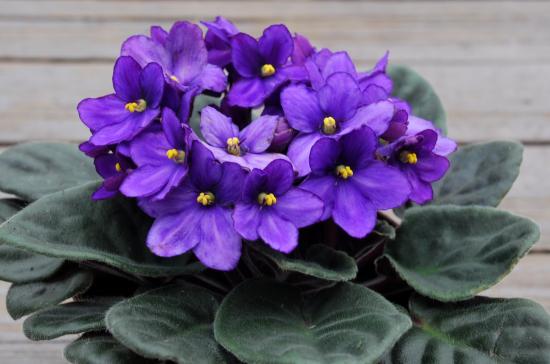
For example, you can use Epin or Zircon. To prevent leaves from curling in the future, you must strictly follow all necessary care measures, select the correct watering and lighting conditions, and also periodically inspect the plant for pests.

